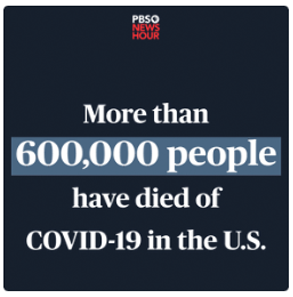Radar on Specialty Pharmacy
-
Prime, Magellan Rx Offer Value Plus to Help States Negotiate Value-Based Contracts for CGTs
As more and more high-cost therapies, including cell and gene therapies (CGTs), enter the U.S. market, commercial health plans have multiple tools at their disposal to manage these agents. Medicaid plans, however, are limited in what they can do. But a multistate value-based contracting (VBC) tool offered by Magellan Rx Management and its parent company, Prime Therapeutics LLC, is helping Medicaid programs access CGTs and ensuring that the agents’ costs are linked to patient outcomes.
A new Medicaid Pharmacy Insights report, titled The State of Value-Based Contracting: Reinventing the Current Drug Payment Model in Medicaid, notes that Medicaid is usually the largest expenditure in state budgets. States need to be able to offer costly CGTs while also managing their budgets. But various barriers to offering value-based contracts — including a lack of resources to negotiate them, as well as collect data and measure outcomes — have limited adoption of these agreements.

-
FDA Broadens Lonsurf Use in Colorectal Cancer
The FDA recently granted another approval to Taiho Pharmaceutical Co., Ltd. Division Taiho Oncology, Inc.’s Lonsurf (trifluridine/tipiracil) in combination with another agent for a type of colorectal cancer. The decision provides another treatment option for a condition that respondents to a Zitter Insights survey regard as in need of more effective therapies.
On Aug. 2, the FDA approved Lonsurf as a single agent or in combination with bevacizumab for the treatment of adults with metastatic colorectal cancer previously treated with fluoropyrimidine-, oxaliplatin- and irinotecan-based chemotherapy, an anti-vascular endothelial growth factor (VEGF) drug and, if Rat sarcoma (RAS) wild-type, an anti-epidermal growth factor receptor (EGFR) therapy. Bevacizumab originally was available as Avastin from Genentech USA, Inc., a member of the Roche Group, but now four biosimilars of it are also on the market: Celltrion USA, Inc.’s Vegzelma (bevacizumab-adcd), Amneal Pharmaceuticals, Inc.’s Alymsys (bevacizumab-maly), Pfizer Inc.’s Zirabev (bevacizumab-bvzr) and Amgen Inc.’s Mvasi (bevacizumab-awwb).

-
CVS Steps Into Biosimilar Space With New Subsidiary Cordavis
CVS Health is getting into the biosimilars business, the company said in late August, and will officially enter the market on Jan. 1 in partnership with a Humira biosimilar. CVS stressed the importance of driving use of biosimilars and ensuring their supply, which sources say is a positive development. But one industry source questions whether the new company raises potential conflict-of-interest issues.
On Aug. 23, CVS revealed that it had launched the wholly owned subsidiary Cordavis to commercialize and/or co-produce biosimilars in collaboration with drug manufacturers. “Through Cordavis, CVS Health intends to develop a portfolio of products that it expects will facilitate broader access to biosimilars in the U.S. — creating more competition that drives down prices — while encouraging investment in future products,” said the company in a press release.

-
New FDA Approvals: FDA Gives Accelerated Approval to J&J’s Talvey
Aug. 9: The FDA gave accelerated approval to the Janssen Pharmaceutical Companies of Johnson & Johnson’s Talvey (talquetamab-tgvs) for the treatment of adults with relapsed or refractory multiple myeloma who have received at least four lines of therapy, including a proteasome inhibitor, an immunomodulatory agent and an anti-CD38 monoclonal antibody. The review was conducted under Project Orbis in collaboration with the Australian Therapeutic Goods Administration and Switzerland’s Swissmedic; it used the Assessment Aid. The agent, a G protein-coupled receptor class C group 5 member D (GPRC5D)-directed CD3 T-cell engager, is a first-in-class bispecific antibody. Dosing of the subcutaneous injection, which is administered by a qualified health care professional, can be done weekly or biweekly. For weekly dosing, a step-up schedule consists of 0.01 mg/kg on day one, then 0.06 mg/kg on day four, then 0.4 mg/kg on day seven and then 0.4 mg/kg one week later and weekly thereafter. For biweekly dosing, administration starts at 0.01 mg/kg on day one, 0.06 mg/kg on day four, 0.4 mg/kg on day seven, then 0.8 mg/kg on day 10 and then 0.8 mg/kg two weeks later and every two weeks thereafter. The drug’s list price is $45,000 per month, and the company estimates a pricing range of $270,000 to $360,000 for an average treatment duration of six to eight months.
-
News Briefs: Groups Sue HHS Over Lost Coverage of Certain Medicare Part B Drugs
The Center for Medicare Advocacy and the Community Legal Services clinic at the University of the Pacific, McGeorge School of Law filed a class action lawsuit (Case 2:23-cv-01932-DB) against HHS on Sept. 8 on behalf of Medicare beneficiaries who have lost coverage of certain Medicare Part B drugs. Plaintiffs were receiving the Janssen Pharmaceutical Companies of Johnson & Johnson’s Stelara (ustekinumab) in an outpatient clinic, where the agent was administered by health care professionals and covered under Part B as an agent provided “incident to” a physician’s service due to disabilities that prevent them from self-administration. In October 2021, HHS denied coverage of Stelara under Part B because it had determined that the drug is “usually self-administered by the patient.” HHS did not notify patients about the change, and it did not require providers to issue a notice. One plaintiff had four injections of more than $40,000 each, while another had two injections of about $58,000 each, before they realized that they were responsible for the full cost of the drug. Plaintiffs are seeking “timely, adequate notice” be required when a Part B drug that has been furnished incident to a practitioner’s service is added to the self-administered drug (SAD) list, as well as a modification to Medicare allowing beneficiaries who cannot self-administer a medically necessary drug due to a disability to be able to received Medicare-covered medications administered by a health care professional, among other requests.











